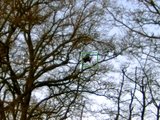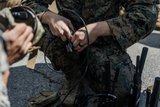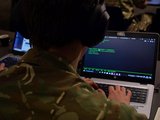US Army focuses on sensor research for situational awareness
US Army scientists and engineers are advancing sensor technology research to enhance the situational awareness of soldiers in the battlefield. The army reported the latest updates on 1 January.
According to the army, sensor technology may help soldiers achieve superior performance on battlefields of the future. Soldiers of 2025 and beyond may wear sensors to help detect and prevent threats such as dehydration, elevated blood pressure and cognitive delays from lack of sleep.
Mary Miller, deputy assistant secretary, Army Research and Technology, said: 'I think that army [Science & Technology] is looking at a broad number of approaches for what sensor capabilities we will need to meet future challenges. We are looking to improve situational awareness, mobility, lethality and even improve the maintainability and effectiveness of our systems.'
Karen O'Connor, command, control, communications, and intelligence portfolio director for the Deputy Assistant Secretary of the Army for Research and Technology in the Office of the Assistant Secretary of the Army for Acquisition, Logistics and Technology, added: 'Our real goal will be to build in multi-functionality. There are sensors in imaging, motion detection, radar, chemical-biological detection and more. At the end of the day, sensors are all about collecting data.'
Enhancing air operations in degraded visual environments (DVEs) is one critical research area. One research programme fuses images of multiple sensor technologies such as radar, infrared, and laser detection and ranging. Each of these sensor technologies provide unique advantages for operating in various types of DVE conditions.
Jyuji Hewitt, executive deputy to the commanding general of the US Army Research, Development and Engineering Command, said: 'Army researchers are working on flexible plastic sensors that could be attached to individuals, gear or vehicles. With this technology, soldiers will gather information on the chemical-biological environment, troop movements and signal intelligence.'
More from Digital Battlespace
-
![Chess Dynamics successfully demonstrates Vision4ce AI-driven tracker]()
Chess Dynamics successfully demonstrates Vision4ce AI-driven tracker
The Vision4ce Deep Embedded Feature Tracking (DEFT) technology software is designed to process video and images by blending traditional computer vision with artificial intelligence (AI) algorithms to present actionable information from complex environments.
-
![Wave Relay devices cleared for security use on commercial systems in industry trend]()
Wave Relay devices cleared for security use on commercial systems in industry trend
Persistent Systems has been cleared by National Security Agency (NSA) to transmit sensitive data on commercial networks. The devices are added to the NSA’s Commercial Solutions for Classified (CSfC) component list which also includes other companies’ products providing the same security.
-
![UK teases cyber spending boost in Strategic Defence Review ahead of “imminent” release]()
UK teases cyber spending boost in Strategic Defence Review ahead of “imminent” release
The release of the UK’s Strategic Defence Review (SDR) has been long promised as mid-year. It is possible it could be as early as 2 June although the UK Ministry of Defence (MoD) continues to play its cards close to its chest.
-
![Intelsat emphasises SATCOM resilience for SOF in contested domains (video)]()
Intelsat emphasises SATCOM resilience for SOF in contested domains (video)
Intelsat outlines how its multi-orbit SATCOM architecture is enhancing connectivity and resilience for special operations forces operating in degraded and contested environments.
-
![US Space Force’s next-generation missile warning system moves forward with $500 million in new contracts]()
US Space Force’s next-generation missile warning system moves forward with $500 million in new contracts
Next-Generation Overhead Persistent Infrared (Next-Gen OPIR) satellites are intended to provide early warning of missile launches from any location worldwide and new ground stations will result in expanded coverage of critical missile warning.






















